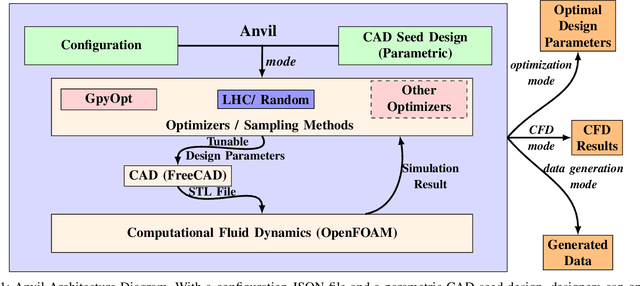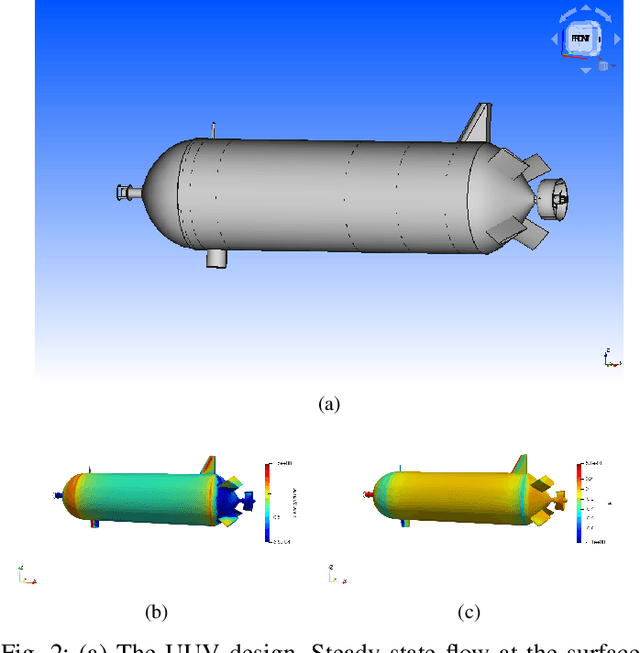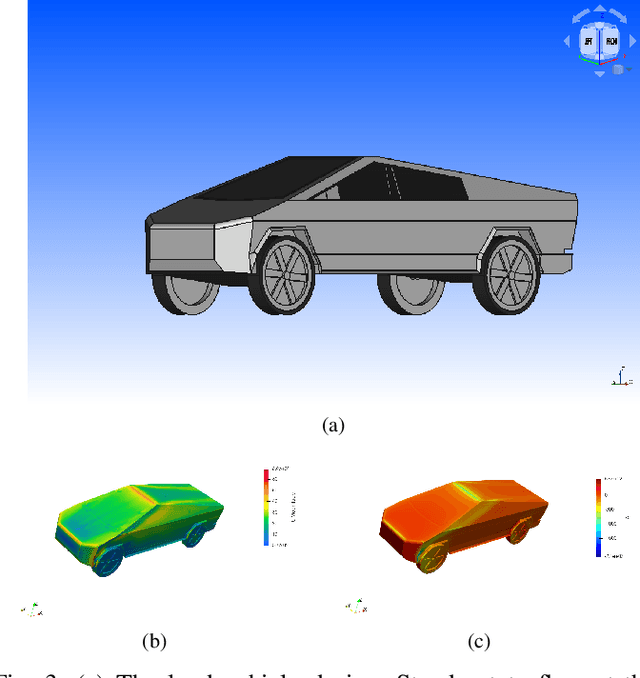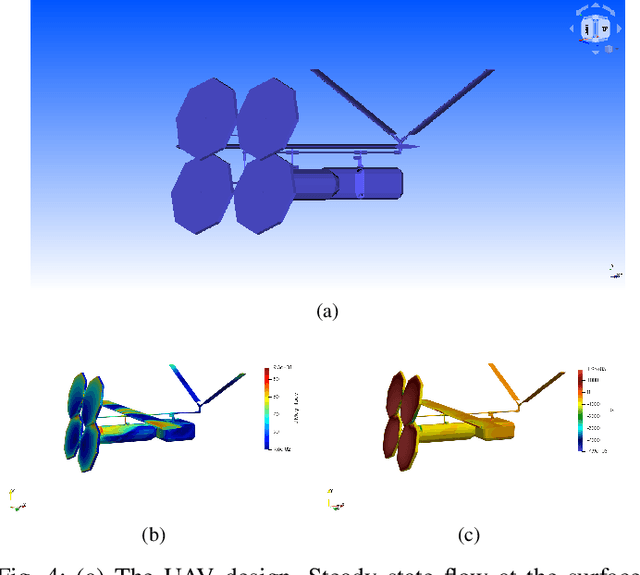Peter Volgyesi
Anvil: An integration of artificial intelligence, sampling techniques, and a combined CAD-CFD tool
Jun 24, 2024



Abstract:In this work, we introduce an open-source integrated CAD-CFD tool, Anvil, which combines FreeCAD for CAD modeling and OpenFOAM for CFD analysis, along with an AI-based optimization method (Bayesian optimization) and other sampling algorithms. Anvil serves as a scientific machine learning tool for shape optimization in three modes: data generation, CFD evaluation, and shape optimization. In data generation mode, it automatically runs CFD evaluations and generates data for training a surrogate model. In optimization mode, it searches for the optimal design under given requirements and optimization metrics. In CFD mode, a single CAD file can be evaluated with a single OpenFOAM run. To use Anvil, experimenters provide a JSON configuration file and a parametric CAD seed design. Anvil can be used to study solid-fluid dynamics for any subsonic flow conditions and has been demonstrated in various simulation and optimization use cases. The open-source code for the tool, installation process, artifacts (such as CAD seed designs and example STL models), experimentation results, and detailed documentation can be found at \url{https://github.com/symbench/Anvil}.
Sample-Efficient and Surrogate-Based Design Optimization of Underwater Vehicle Hulls
Apr 24, 2023Abstract:Physics simulations are a computational bottleneck in computer-aided design (CAD) optimization processes. Hence, in order to make accurate (computationally expensive) simulations feasible for use in design optimization, one requires either an optimization framework that is highly sample-efficient or fast data-driven proxies (surrogate models) for long running simulations. In this work, we leverage recent advances in optimization and artificial intelligence (AI) to address both of these potential solutions, in the context of designing an optimal unmanned underwater vehicle (UUV). We first investigate and compare the sample efficiency and convergence behavior of different optimization techniques with a standard computational fluid dynamics (CFD) solver in the optimization loop. We then develop a deep neural network (DNN) based surrogate model to approximate drag forces that would otherwise be computed via direct numerical simulation with the CFD solver. The surrogate model is in turn used in the optimization loop of the hull design. Our study finds that the Bayesian Optimization Lower Condition Bound (BO LCB) algorithm is the most sample-efficient optimization framework and has the best convergence behavior of those considered. Subsequently, we show that our DNN-based surrogate model predicts drag force on test data in tight agreement with CFD simulations, with a mean absolute percentage error (MAPE) of 1.85%. Combining these results, we demonstrate a two-orders-of-magnitude speedup (with comparable accuracy) for the design optimization process when the surrogate model is used. To our knowledge, this is the first study applying Bayesian optimization and DNN-based surrogate modeling to the problem of UUV design optimization, and we share our developments as open-source software.
Constrained Bayesian Optimization for Automatic Underwater Vehicle Hull Design
Mar 15, 2023Abstract:Automatic underwater vehicle hull Design optimization is a complex engineering process for generating a UUV hull with optimized properties on a given requirement. First, it involves the integration of involved computationally complex engineering simulation tools. Second, it needs integration of a sample efficient optimization framework with the integrated toolchain. To this end, we integrated the CAD tool called FreeCAD with CFD tool openFoam for automatic design evaluation. For optimization, we chose Bayesian optimization (BO), which is a well-known technique developed for optimizing time-consuming expensive engineering simulations and has proven to be very sample efficient in a variety of problems, including hyper-parameter tuning and experimental design. During the optimization process, we can handle infeasible design as constraints integrated into the optimization process. By integrating domain-specific toolchain with AI-based optimization, we executed the automatic design optimization of underwater vehicle hull design. For empirical evaluation, we took two different use cases of real-world underwater vehicle design to validate the execution of our tool.
Fusion of ML with numerical simulation for optimized propeller design
Feb 28, 2023Abstract:In computer-aided engineering design, the goal of a designer is to find an optimal design on a given requirement using the numerical simulator in loop with an optimization method. In this design optimization process, a good design optimization process is one that can reduce the time from inception to design. In this work, we take a class of design problem, that is computationally cheap to evaluate but has high dimensional design space. In such cases, traditional surrogate-based optimization does not offer any benefits. In this work, we propose an alternative way to use ML model to surrogate the design process that formulates the search problem as an inverse problem and can save time by finding the optimal design or at least a good initial seed design for optimization. By using this trained surrogate model with the traditional optimization method, we can get the best of both worlds. We call this as Surrogate Assisted Optimization (SAO)- a hybrid approach by mixing ML surrogate with the traditional optimization method. Empirical evaluations of propeller design problems show that a better efficient design can be found in fewer evaluations using SAO.
Data efficient surrogate modeling for engineering design: Ensemble-free batch mode deep active learning for regression
Nov 16, 2022Abstract:In a computer-aided engineering design optimization problem that involves notoriously complex and time-consuming simulator, the prevalent approach is to replace these simulations with a data-driven surrogate that approximates the simulator's behavior at a much cheaper cost. The main challenge in creating an inexpensive data-driven surrogate is the generation of a sheer number of data using these computationally expensive numerical simulations. In such cases, Active Learning (AL) methods have been used that attempt to learn an input--output behavior while labeling the fewest samples possible. The current trend in AL for a regression problem is dominated by the Bayesian framework that needs training an ensemble of learning models that makes surrogate training computationally tedious if the underlying learning model is Deep Neural Networks (DNNs). However, DNNs have an excellent capability to learn highly nonlinear and complex relationships even for a very high dimensional problem. To leverage the excellent learning capability of deep networks along with avoiding the computational complexity of the Bayesian paradigm, in this work we propose a simple and scalable approach for active learning that works in a student-teacher manner to train a surrogate model. By using this proposed approach, we are able to achieve the same level of surrogate accuracy as the other baselines like DBAL and Monte Carlo sampling with up to 40 % fewer samples. We empirically evaluated this method on multiple use cases including three different engineering design domains:finite element analysis, computational fluid dynamics, and propeller design.
 Add to Chrome
Add to Chrome Add to Firefox
Add to Firefox Add to Edge
Add to Edge